ArmyTek Predator
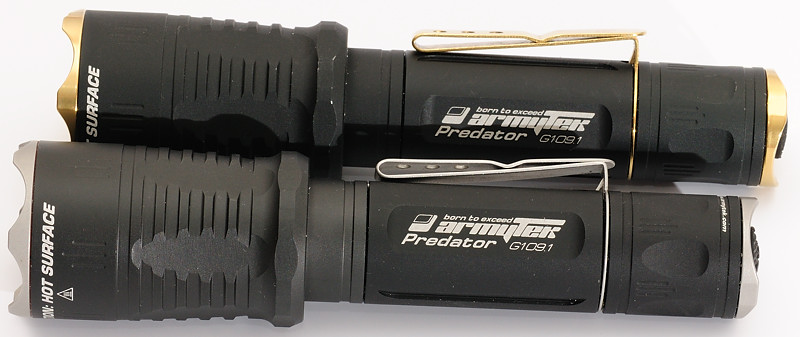
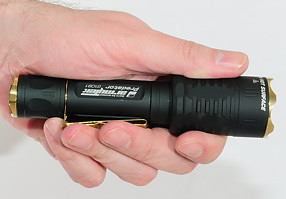
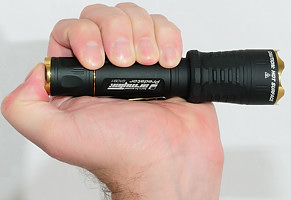
ArmyTek is a new flashlight company, it is based in Canada and does the design and development, actual production is as usual in China. This light is their first light and at first glance it looks like any other flashlight, but this is a bit deceiving. The light is controlled with the tailswitch and loosing/tighten the head, the number of settings and their function is programmable. The light is made of aluminum with hard-anodized (Type 3) finish
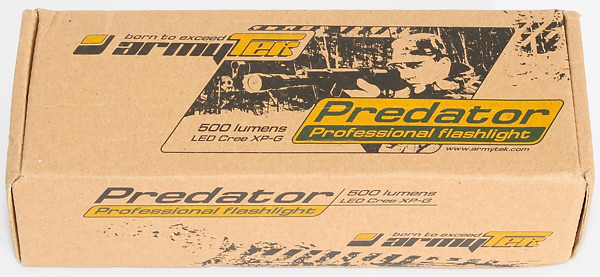
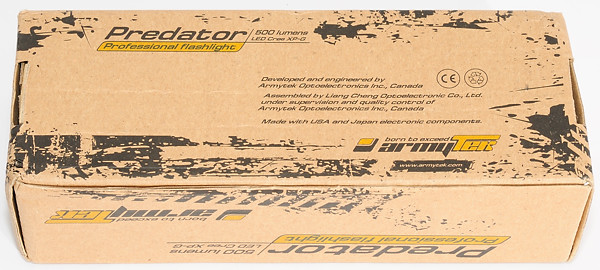
The light is delivered in a cardboard box.
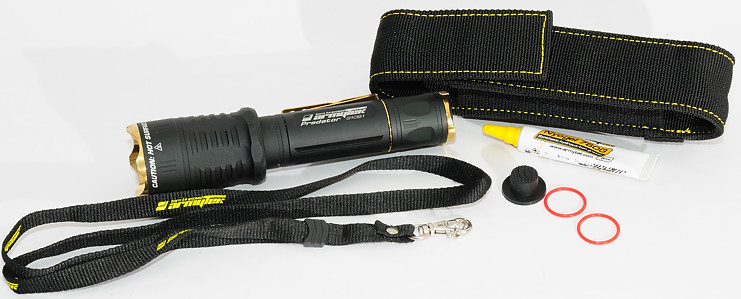
The content of the box is: Flashlight, lanyard with split ring, 2 spare o-rings, boot for the tail switch, grease and a holster. The manual is missing in my box, but ArmyTek will be supplying a manual with regular orders. The manual can also be downloaded from the ArmyTek website.
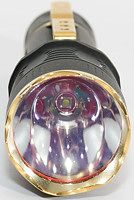

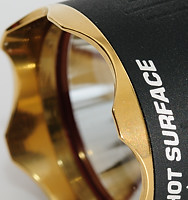
The light has a smooth and very deep reflector with a XP-G led in the center. The bezel is protected with a stainless steel ring. The light exists in two version, one with a plain ss ring and one with a gold colored coating on the ss ring.
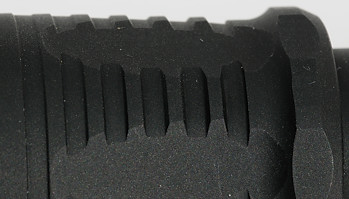
The light does not have heat sink fins, the black color is enough (Testen with a full run without extra cooling). The ridges on the head improve the grip on the light and flat faces on the ridge at the back of the head prevents the light from rolling on nearly horizontal faces (The clip is much better at this, but can be removed).
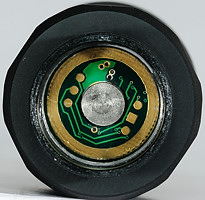
Inside the head there is a metal plate on the plus pole, this makes it possible to use flat top batteries. There is also some connection points, I expect they are used during production to program the microprocessor in the light. The outer golden ring is the connection for detecting loose/tight head.
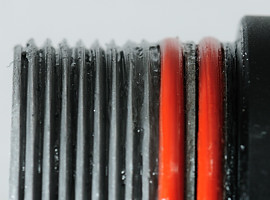
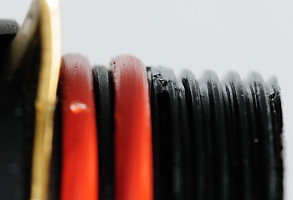
The thread on the battery tube is bare aluminium in the front and anodized in the back, i.e. the tailcap can be used for lockout. The light uses double o-rings as seal.
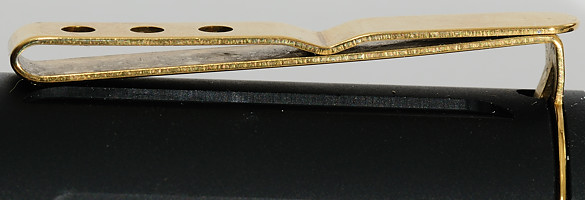
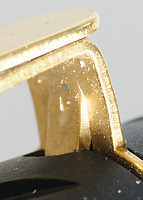
The clip is mounted on the battery tube in the connection between tube and tailcap. The clip is locked in position as can be seen on the second picture. To remove the clip the o-rings must be removed first.
The clip has the same surface as the bezel ring.
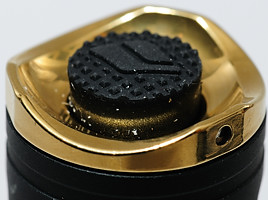
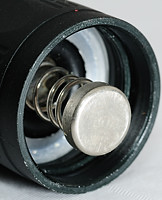
The tailcap has the on/off switch of the forward type, with a stainless steel collar to protect it from impacts. The collar has a small hole for the split ring. The light might be able to tailstand when it is on.
There is a very long spring in the tailcap, this makes it possible to use any size 18650 batteries.
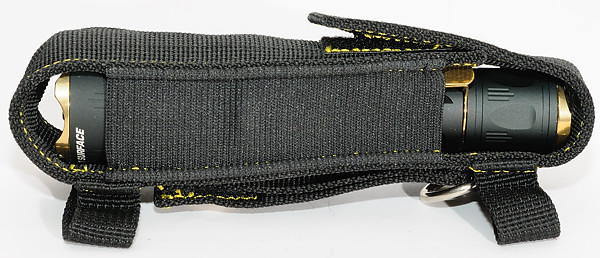

The holster is with elastic sides making it possible to use it with either bezel up or down. It has loops for mounting on either horizontal belts or vertical straps.

Here is all the part the light can be disassembled in without tools

The above graphic shows the two standard programming preset, but that is just a small sample of the possibilites with the light.

The modes are changed with the head, i.e. the tailswitch is can be used for momentary flashes without changing the settings. Selection of line is done by loosing or tighten the head, after a few second the corresponding line is selected.
The number of settings in "first line" and "second line" is programmable, either with two presets (Military or outdoor) or to any number from 1 to the maximum for the line. Most of the programming is initiated from the second line, only brightness changes for a specific position can be initiated from the frist line.
Entering the programming mode requires a special sequence:

From first line loosen the head, wait until light changes to second line, then immediately tighten the head and
turn the light off then on again. The light is now in brightness selection. It will flash at 25%, 50%, 75% and 100% settings. Do a fast loosen and tighten of the head to lock in the current brightness.
From second line tighten the head, wait until light changes to first line, the immediately loose the head and turn off, turn on the light. The light is now in the configuration menu. Use off/on to change, tighten/loosen to select. The following settings are accessible (The list matches the menu system):
- Strobe-frequency, Firefly, Beacon, SOS, Brightness
- Military, Outdoor
- Number of settings in first line
- Number of settings in second line
- CR123 batteries, 1x18650, 2x16340, 1x18650 LiFePO4
- Full stabilization, Semi stabilization, Step stabilization
- Memorize last selection for both line 1 and 2, Memorize 2, Memorize 1, no memory

Selecting "Menu 1" shows all the different modes, I could have selected any of them with a head tighten/loose sequence.

The above curve shows selection of outdoor mode. First programming is entered with start at "Menu 1", a quick off/on will move to "Menu 2". Tighten/loosing the head confirms that I want to change in this menu. The light will automatic change between the avaible modes and I confirm "Outdoor" by tighten/loosen the head at the right time. That outdoor is selected can be confirmed with the presens of both low and firefly mode in the sequence.

Last example, this time I skip fast to "Menu 7" by doing 6 off/on without waiting for flashing confirmation. Then I select that the light must only memorize "Line 1".
This light with the buck/boost converter, programability and selectable stabilization is very advanced and fleksible. I belive this is a very good light with some unique ablities that ArmyTek has introduced the company with. To use all these posibilities has a price, it is necessary to learn how to get around in the programming menu and then make a configuration. This is not difficult, but requires that some time is used with the instruction and the light. For anybody that does not want to use that time, it is just a good flashlight.
Technical specification and measurements
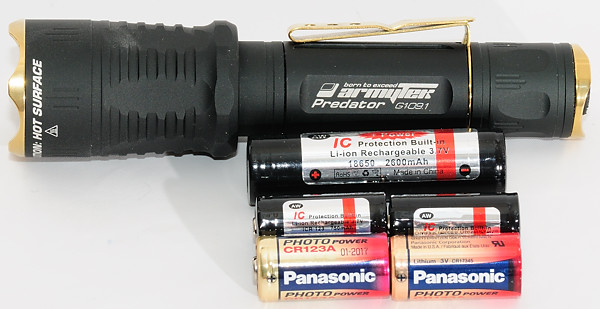
This light is designed for 2xCR123, 1x18650 or 2x16340 batteries.
The long spring in the tail allows the light to use even the longest 18650 batteries (70mm), but it will have problems with some protected 16340 batteries.
The light can be configured to warn when battery level is low, but it will not turn the light off, i.e. do not run unprotected LiIon cells without supervision.
Measured size and weight:
Length: 154 mm
Diameter: 25.4 mm to 36.6 mm
Weight: 165 gram with CR123 and 178 gram with AW18650-26
The light uses a Cree XP-G led.

In the above table I have used 2600mAh 18650 batteries for measuring and estimating runtime, the runtime are measured with full stabilization. The estimated lumen are based on the specified 500 lumen and then scaled according to measured brightness.
The Firefly mode is not regulated the same way the other modes are, it always uses 1.2 mA, independent of battery voltage.
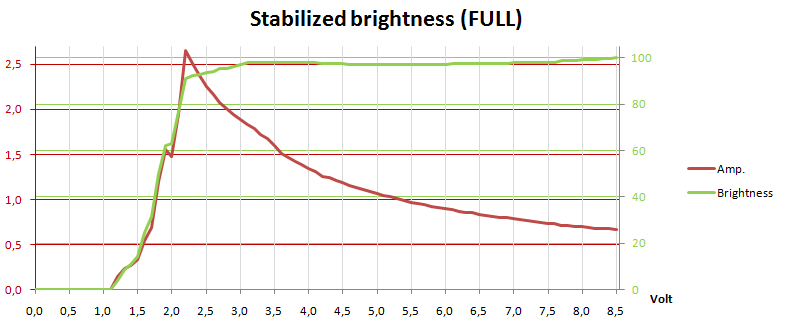
The voltage scan with full stabilization shows that the light is stabilized down to about 3 volt and keeps nearly full brightness down to 2.2 volt, this is very impressive and shows that the light uses a buck/boost converter. But with a maximum current above 2.5 ampere it is not the best for CR123 batteries.

Selecting semi stabilization mode changes the current profile, now it is only stabilizing down to 3.5 volt and then it starts reducing the brightness. This limits the maximum current draw to 1.5 ampere and is much better for CR123 batteries.
With 18650 batteries where the protection trips at 2.5 volt, this light will not suddenly go dark, instead it will simply drop in brightness to nearly nothing and run a very long time.

The runtime will depend on stabilization mode, selected brightness and batteries, I have only tested with maximum brightness and in both military and outdoor mode (Military uses full and outdoor uses step stabilization). With step stabilization the light does not turn off when the battery are nearly empty, it will run a long time with reduced brightness.

The strobe can be programmed to many different frequencies and brightness settings, this trace here is with the default strobe that is around 12 Hz (Not as specified 15), but with some variation. It uses a 50% duty cycle.
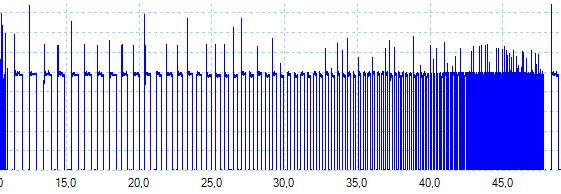
In the strobe selection is shown frequences between 1 and 32 hz.

The beacon is at a lower brightness, each flash is 0.21 second and there is 7 seconds between flashes.

SOS uses a 0.5 second dot and does not not have extra space between letters, the total transmission time is 11.6 second and then a 6 second pause before repeating.
Comparison to other Flashlights
For more lights in this range see Beamshot lights with multiple CR123 or AA batteries, October 2010
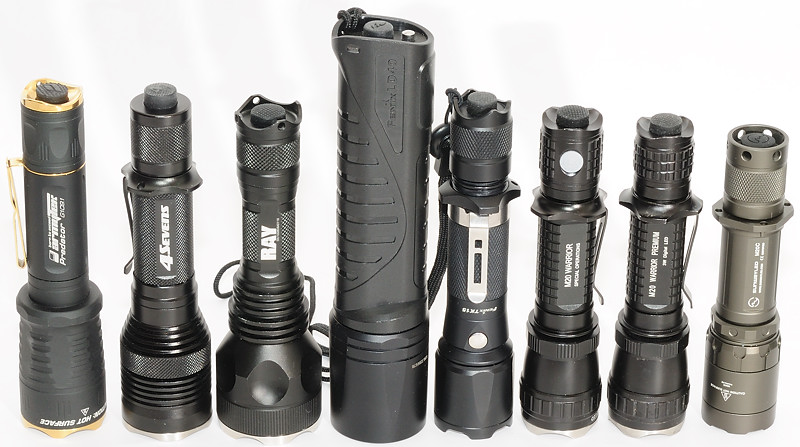

I have compared the ArmyTek with other 18650 lights and a single 4xAA light, they are (Same sequence as picture): ArmyTek Predator, 4sevens Maelstrom G5 (updated version), Ray X60, Fenix LD40, Fenix TK15, M20 Warrior Special Operations XP-G S2, M20 Warrior XR-E R2, Sunwayled M20C XR-E
Note: I have used the military preset for ArmyTek Predator.

Doing a ceiling bounce show that the Predator has a very good light output for its size.
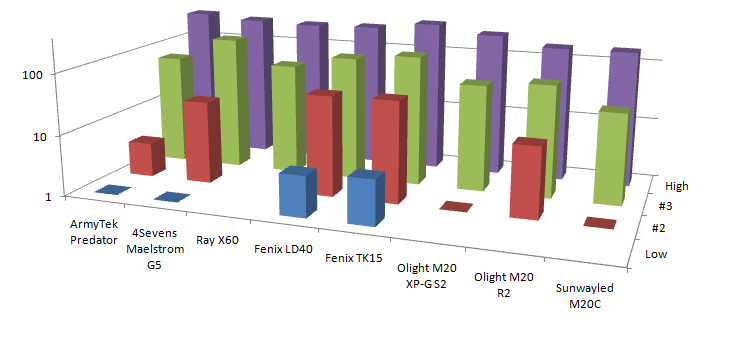
Combining all brightness settings (Predator in military mode), shows that Predator has a nice spread on its modes, but for anyone not satisfied with the modes, it is easy to reprogram the light.
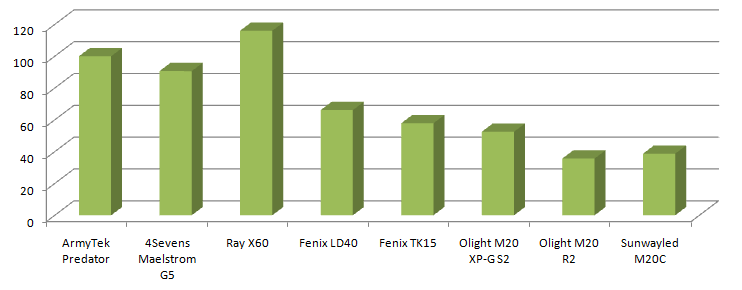
The deep reflector and the high output of the Predator gives it a very good throw (The above chart is made at 4 meters), only the Ray with a larger head diameter can surpass it.
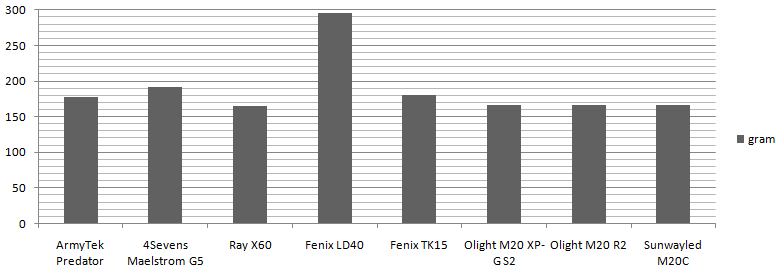
The light is about the same weight as other 1x18650 lights.

When looking at the summary, the Predator is a bit unspecific in supported modes, because it depends on the actual configuration.
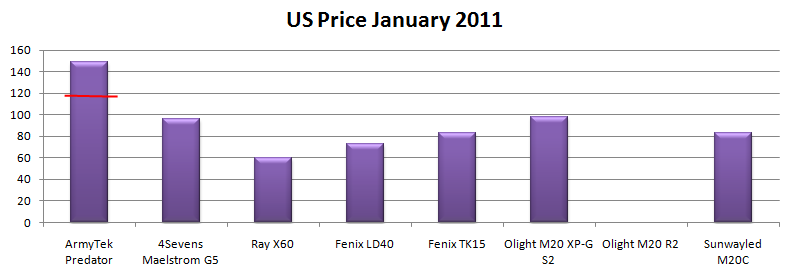
The Predator being a new light with some advanced functions is more expensive than the other lights in this comparison. The red line is a introduction offer.
Beamprofile at maximum power
ArmyTek Predator, 4sevens Maelstrom G5 (updated version), Ray X60
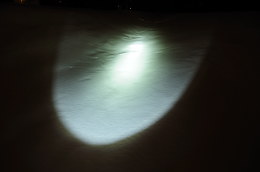
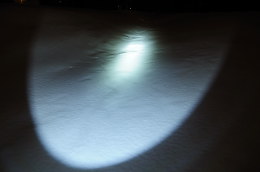
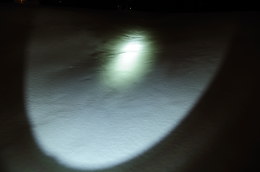
Fenix LD40, Fenix TK15, M20 Warrior Special Operations XP-G S2
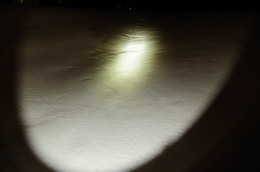
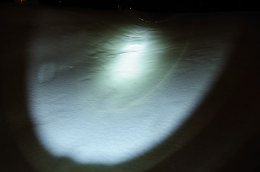
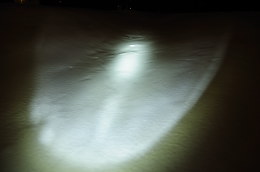
M20 Warrior XR-E R2, Sunwayled M20C XR-E

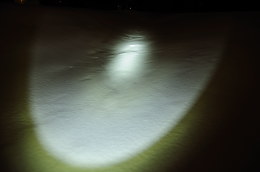
Beamprofile at maximum power, reduced exposure
ArmyTek Predator, 4sevens Maelstrom G5 (updated version), Ray X60

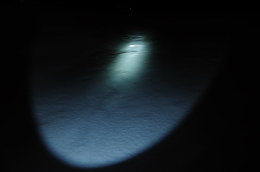
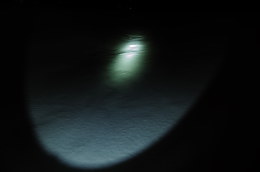
Fenix LD40, Fenix TK15, M20 Warrior Special Operations XP-G S2
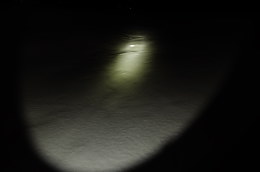
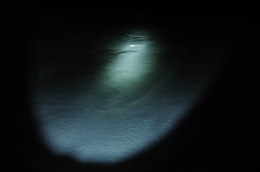
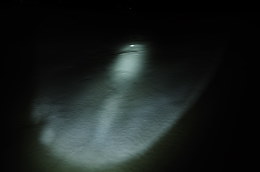
M20 Warrior XR-E R2, Sunwayled M20C XR-E

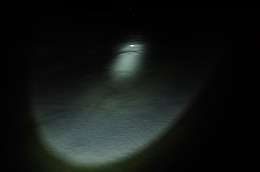
Beamprofile at minimum power
Note: I have used the low mode, not the firefly mode (It would not show any beam)!
ArmyTek Predator, 4sevens Maelstrom G5 (updated version), Ray X60
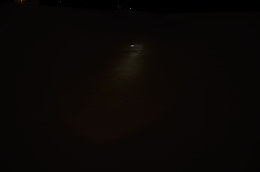


Fenix LD40, Fenix TK15, M20 Warrior Special Operations XP-G S2
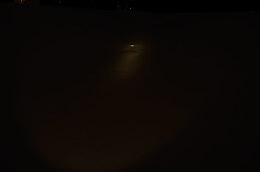
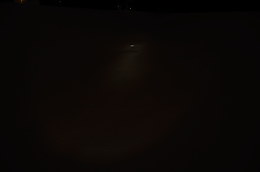
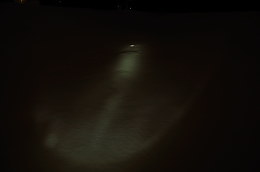
M20 Warrior XR-E R2, Sunwayled M20C XR-E

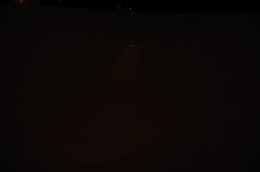
Beamprofile at minimum power, increased exposure
Note: I have used the low mode, not the firefly mode (It would not show any beam)!
ArmyTek Predator, 4sevens Maelstrom G5 (updated version), Ray X60
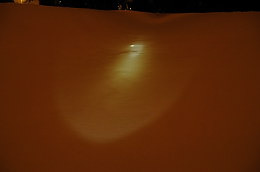
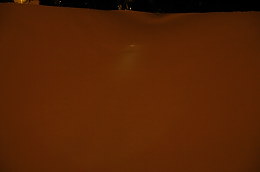
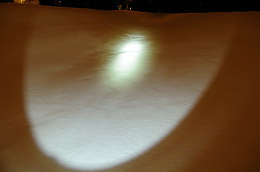
Fenix LD40, Fenix TK15, M20 Warrior Special Operations XP-G S2
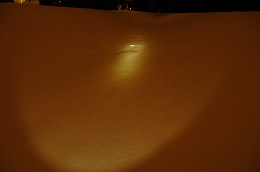
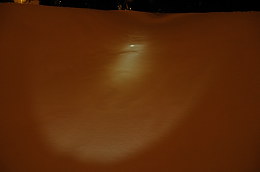
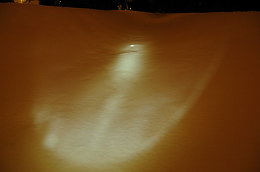
M20 Warrior XR-E R2, Sunwayled M20C XR-E


Dark reference:
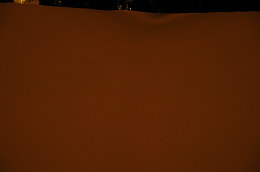
Tree at 12 meters
Note: The shadow in the M20 R2 beam is a drop of water on the bezel.
ArmyTek Predator, 4sevens Maelstrom G5 (updated version), Ray X60
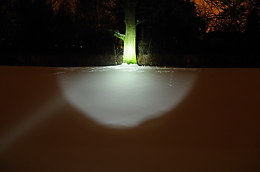

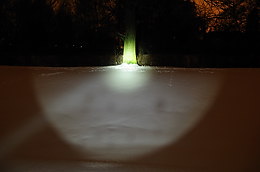
Fenix LD40, Fenix TK15, M20 Warrior Special Operations XP-G S2
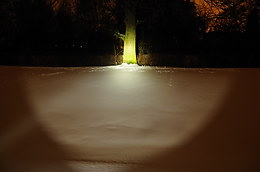
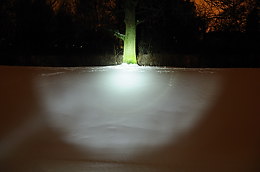
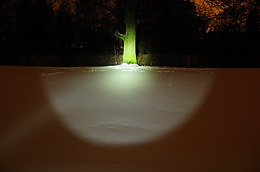
M20 Warrior XR-E R2, Sunwayled M20C XR-E
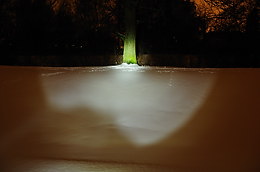

Dark reference:

Trees at 50 meters
ArmyTek Predator, 4sevens Maelstrom G5 (updated version), Ray X60



Fenix LD40, Fenix TK15, M20 Warrior Special Operations XP-G S2



M20 Warrior XR-E R2, Sunwayled M20C XR-E
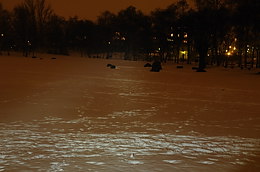
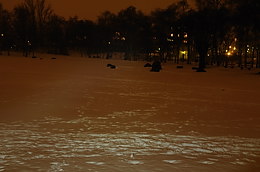
Dark reference:

ArmyTek Predator

Firefly, Low, medium:


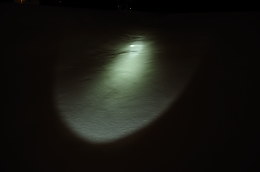
High:

Tree at 12 meter, trees at 50 meters:


4sevens Maelstrom G5 (updated version)

Read more about the light and see pictures and measurements in my review.
Low, #2, #3:

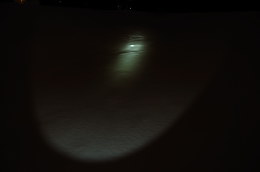
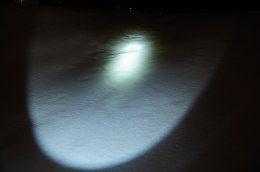
High:

Tree at 12 meter, trees at 50 meters:


Ray X60

Read more about the light and see pictures and measurements in my review.
Low, high:


Tree at 12 meter, trees at 50 meters:


Fenix LD40

Low, #2, #3:


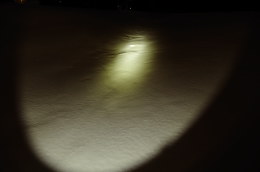
High:

Tree at 12 meter, trees at 50 meters:


Fenix TK15

Low, #2, #3:

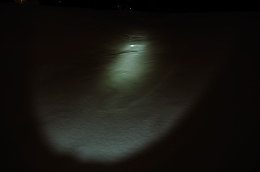

High:

Tree at 12 meter, trees at 50 meters:


M20 Warrior Special Operations XP-G S2

Low, medium, high:

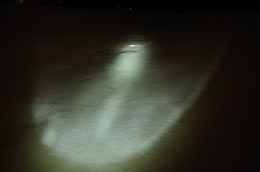

Tree at 12 meter, trees at 50 meters:


M20 Warrior XR-E R2

Tree at 12 meter, trees at 50 meters:


Sunwayled M20C XR-E

Low, medium, high:

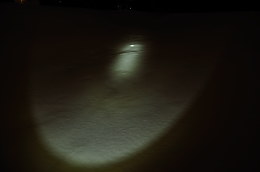

Tree at 12 meter, trees at 50 meters:


Notes
The lights was supplied by ArmyTek for a review. The first copy had a software bug, ArmyTek has fixed the software and send a new light I could use to finish the review with.












































































































































